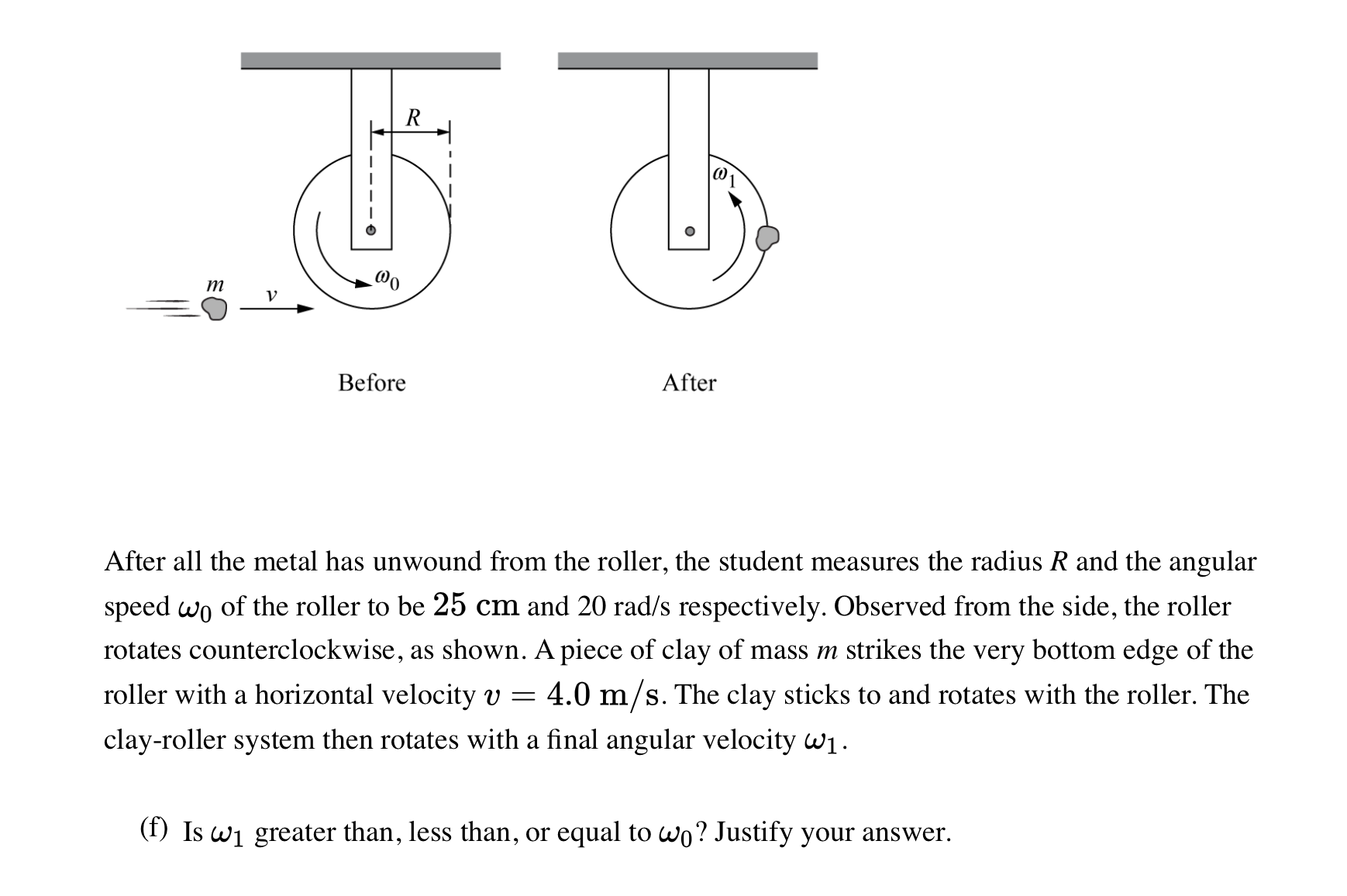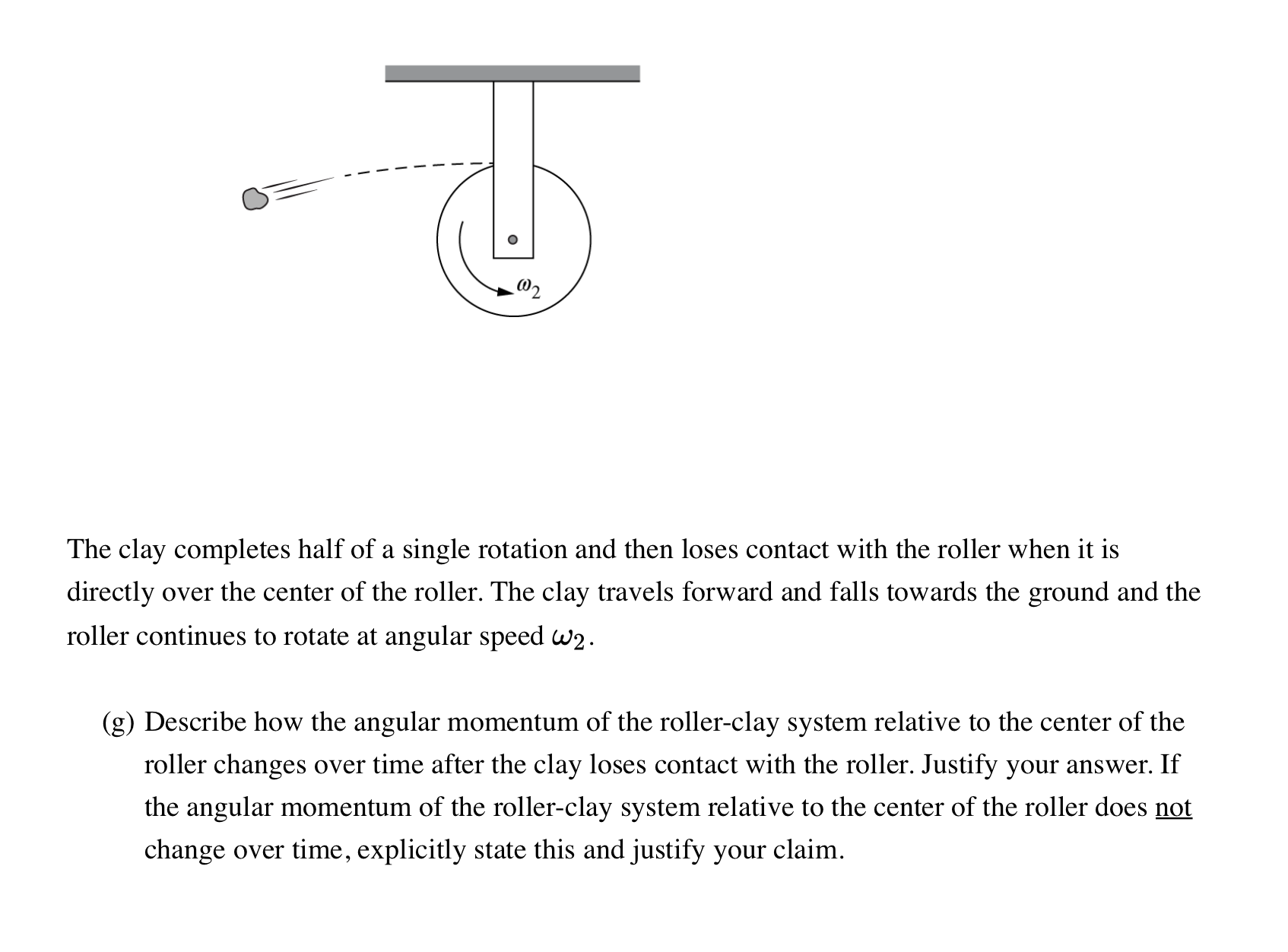After all the metal has unwound from the roller, the student measures the radius R and the angular speed wo of the roller to be 25 cm and 20 rad/s respectively. Observed from the side, the roller rotates counterclockwise, as shown. A piece of clay of mass m strikes the very bottom edge of the roller with a horizontal velocity v = 4.0 m/s. The clay sticks to and rotates with the roller. The clay-roller system then rotates with a final angular velocity wi. (f) Is wi greater than, less than, or equal to wo? Justify your answer.
After all the metal has unwound from the roller, the student measures the radius R and the angular speed wo of the roller to be 25 cm and 20 rad/s respectively. Observed from the side, the roller rotates counterclockwise, as shown. A piece of clay of mass m strikes the very bottom edge of the roller with a horizontal velocity v = 4.0 m/s. The clay sticks to and rotates with the roller. The clay-roller system then rotates with a final angular velocity wi. (f) Is wi greater than, less than, or equal to wo? Justify your answer.
Related questions
Question

Transcribed Image Text:After all the metal has unwound from the roller, the student measures the radius R and the angular
speed wo of the roller to be 25 cm and 20 rad/s respectively. Observed from the side, the roller
rotates counterclockwise, as shown. A piece of clay of mass m strikes the very bottom edge of the
roller with a horizontal velocity v = 4.0 m/s. The clay sticks to and rotates with the roller. The
clay-roller system then rotates with a final angular velocity wi.
(f) Is wi greater than, less than, or equal to wo? Justify your answer.

Expert Solution
This question has been solved!
Explore an expertly crafted, step-by-step solution for a thorough understanding of key concepts.
This is a popular solution!
Trending now
This is a popular solution!
Step by step
Solved in 4 steps with 4 images
